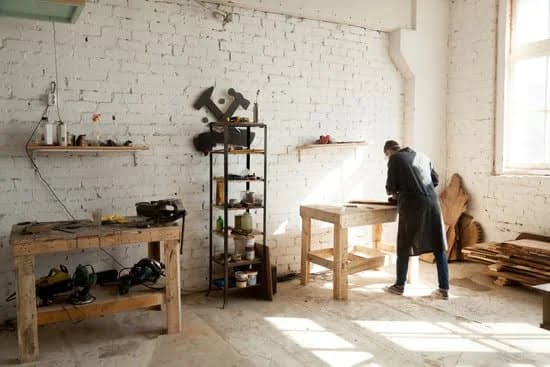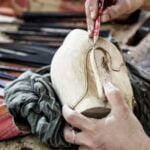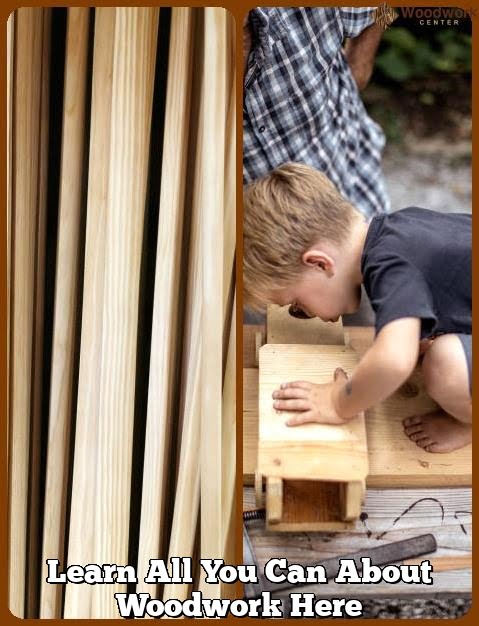Birch wood has long been admired for its beauty and versatility in woodworking projects. Whether you are a seasoned craftsman or just starting out in the world of woodworking, understanding how to find high-quality birch is essential. This article will guide you through the process of locating and working with birch wood, from understanding the different species to identifying ideal locations for finding birch trees.
Birch wood is known for its pale color, smooth grain, and attractive patterns that vary depending on the species. Two common types of birch used in woodworking are yellow birch and white birch. Each has its unique characteristics and applications in different types of projects. By familiarizing yourself with these differences, you can choose the type of birch that best suits your needs.
Finding high-quality birch wood starts with researching reliable suppliers and local stores that stock this sought-after material. By doing thorough research, you can ensure that you are purchasing wood of the highest quality that meets your specific requirements. Additionally, exploring the natural habitats of birch trees can provide insight into where to find birch wood on your own.
Identifying birch trees in the wild can be an exciting venture for woodworking enthusiasts. Knowing key characteristics such as bark color and leaf shape can assist you in locating these majestic trees during your search for prime lumber. It is important to approach harvesting responsibly, considering sustainable practices and ethical guidelines to protect these valuable resources.
To maximize the potential of your birch wood, it is crucial to properly prepare it before starting any project. Techniques such as drying and storing will help ensure optimal performance and longevity in your creations. Moreover, there are various tips and tricks specific to working with birch wood that can enhance both its natural beauty and durability.
In the following sections, we will delve deeper into understanding different types of birch species, researching suppliers, exploring natural habitats for finding birch wood, identifying key characteristics of birch trees, responsible harvesting practices, preparation techniques, and tips for working with birch. Through this comprehensive guide, you will gain the knowledge and confidence to incorporate the allure of birch wood into your woodworking journey.
Understanding the different types of birch species for woodworking
Birch wood is highly regarded in the world of woodworking for its beauty and versatility. However, it’s important to understand the different types of birch species available and how they can impact your woodworking projects. The two main types of birch species commonly used in woodworking are Yellow Birch and White Birch.
Yellow Birch, also known as Betula alleghaniensis, is widely recognized for its warm golden tone and pronounced grain patterns. It has a rich, reddish-brown color that adds depth and character to any woodworking project. Yellow Birch is known for being strong and durable, making it an excellent choice for furniture, cabinets, flooring, and other structural elements.
On the other hand, White Birch, or Betula papyrifera, features a lighter color palette with creamy white tones. Its smooth texture and fine grain make it ideal for wood turning, carving, and crafting intricate designs. White Birch is often sought after for its light appearance and delicate look, which lends itself well to decorative items such as bowls, spoons, and small decorative boxes.
When deciding between Yellow Birch and White Birch for your woodworking projects, consider the overall aesthetic you wish to achieve. Whether you prefer the warmth of Yellow Birch or the lightness of White Birch, both species offer unique characteristics that can enhance your creations.
To find high-quality birch wood for your woodworking needs, it’s crucial to research reputable suppliers and local stores. Look for suppliers that specialize in hardwoods or carry a wide range of lumber options to ensure you have access to the best selection available. Consider reaching out to local woodworking associations or online forums to gather recommendations from experienced woodworkers in your area.
Researching birch wood suppliers and local stores
One essential aspect of working with birch wood for woodworking projects is finding a reliable and reputable supplier or local store that offers high-quality birch. Researching various birch wood suppliers and local stores can help ensure that you have access to the best materials for your woodworking needs.
When researching birch wood suppliers, it is important to consider several factors. First and foremost, look for suppliers that specialize in woodworking materials or have a wide selection of hardwoods. This indicates their expertise and commitment to providing quality products. Additionally, consider the reputation of the supplier by reading customer reviews and ratings. This can give you insight into the reliability and satisfaction of previous customers.
Local stores are another valuable resource for finding high-quality birch wood. Visit nearby hardware stores, lumberyards, and specialty woodworking shops to explore their selection of birch. These physical locations allow you to see and feel the wood in person before making a purchase. You can also inquire about any special offers, discounts, or promotions available at these stores.
| Criteria | Considerations |
|---|---|
| Specialization | Look for suppliers that specialize in woodworking materials or have a wide selection of hardwoods. |
| Reputation | Read customer reviews and ratings to gauge the reliability and satisfaction levels of previous customers. |
| Physical Location | Visit nearby hardware stores, lumberyards, and specialty woodworking shops to personally inspect their selection. |
| Promotions/Discounts | Inquire about any special offers, discounts, or promotions that suppliers or stores may currently have. |
By thoroughly researching birch wood suppliers and local stores, you can ensure that you find high-quality materials for your woodworking projects. Taking the time to identify reliable sources will not only enhance the outcome of your projects but also contribute to a more enjoyable woodworking experience overall.
Exploring the natural habitats of birch trees
Birch trees are widely distributed across various regions of the world, making them accessible to woodworkers in different locations. However, understanding the natural habitats of birch trees can increase your chances of finding high-quality birch wood for your woodworking projects.
Birch trees thrive in cool temperate climates and are commonly found in forests and woodlands. They prefer well-drained soil and can often be found growing near streams or other sources of water. Additionally, birch trees tend to flourish in areas with partial sunlight rather than full shade.
One way to identify potential locations for finding birch wood is by researching the native ranges of different species. For example, yellow birch (Betula alleghaniensis) is native to eastern North America while white birch (Betula pendula) is prevalent in Europe and parts of Asia. By knowing which species are more likely to be present in your area, you can narrow down your search for birch wood.
In addition to considering climate and species distribution, it can also be helpful to explore specific types of landscapes where birch trees are known to thrive. Birch trees are often found in moist environments like marshes or wetlands. They can also grow on hillsides or slopes where they have access to plenty of water drainage.
To increase your chances of finding quality birch wood, consider reaching out to local forestry organizations or consulting with experienced hikers or nature enthusiasts who may have knowledge about prime locations for harvesting birch timber sustainably. Remember that responsible harvesting practices should always be employed to minimize environmental impact and ensure the long-term health of these beautiful trees.
By exploring the natural habitats of birch trees and identifying ideal locations for finding birch wood, you can enhance your woodworking projects with the unique characteristics this versatile material has to offer.
Tips for identifying birch trees in the wild
One of the first steps in finding birch wood for your woodworking projects is being able to identify birch trees in the wild. This can be done by looking for key characteristics that are unique to birch trees. By knowing what to look for, you can increase your chances of finding a source of high-quality birch wood.
Birch trees have several distinguishing features that make them relatively easy to identify. First and foremost, the bark of a mature birch tree is typically white or silver-gray and has distinctive horizontal markings called lenticels. These lenticels provide oxygen and allow the tree to breathe. The combination of white bark and horizontal markings is one of the most noticeable characteristics that sets birch trees apart from other tree species.
In addition to their distinctive bark, birch trees also have leaves with a distinctive shape and arrangement. Birch leaves are simple, meaning they are not divided into leaflets like compound leaves. They are generally oval or triangular in shape with serrated edges. Most birch trees have alternating leaf arrangements along the branches, although there are some species that have opposite leaf arrangements.
When searching for birch trees in the wild, it is also important to consider their preferred habitats. Birch trees tend to thrive in moist environments such as wetlands, riverbanks, and areas with good drainage. They can also tolerate colder climates and are often found in temperate regions across North America, Europe, and Asia.
Key Characteristics of Birch Trees
| Distinguishing Feature | Description |
|---|---|
| Bark Color | White or silver-gray |
| Bark Markings | Horizontal lines called lenticels |
| Leaf Shape | Oval or triangular with serrated edges |
| Leaf Arrangement | Alternating or opposite along branches |
| Habitat | Moist environments, wetlands, riverbanks |
By familiarizing yourself with these key characteristics of birch trees, you will be better equipped to identify them in the wild and increase your chances of finding a source of birch wood for your woodworking projects. Remember to always obtain permission if harvesting from private property and practice responsible and sustainable woodworking techniques.
Harvesting birch wood responsibly
Harvesting birch wood responsibly is crucial for maintaining the sustainability and ethics of woodworking. By following best practices, woodworkers can ensure that they are not contributing to deforestation or damaging the natural habitat of birch trees. Here are some guidelines to consider when harvesting birch wood:
- Obtain proper permits and permissions: Before harvesting any wood, it’s important to check local regulations and obtain the necessary permits or permissions. This allows for responsible management of forests and ensures that you are not infringing on protected areas.
- Select trees carefully: When choosing which birch trees to harvest, look for those that are mature and healthy but also consider their importance within the ecosystem. Avoid removing large quantities of birch trees from one area as it can disrupt biodiversity and affect wildlife habitats.
- Practice selective cutting: Instead of clear-cutting entire areas, practice selective cutting where only a limited number of trees are harvested at a time. This method allows for regeneration of the forest and minimizes the impact on surrounding plants and animals.
- Utilize fallen or deadwood: Whenever possible, use fallen or deadwood for your woodworking projects instead of cutting down live trees. Fallen trees still provide high-quality birch wood that can be repurposed without causing further harm to the environment.
- Minimize waste: Make sure to maximize the use of harvested birch wood by minimizing waste. Plan your projects carefully to optimize material usage, save scraps for smaller crafts, or donate excess wood to other woodworkers.
By adhering to these best practices, woodworkers can help preserve the beauty and sustainability of birch forests while creating stunning pieces with this versatile material. Responsible harvesting not only benefits the environment but also ensures a long-term supply of high-quality birch wood for future generations of woodworking enthusiasts.
Preparing birch wood for woodworking projects
Understanding the importance of proper drying and storing
Before you can begin working with birch wood for your woodworking projects, it is crucial to understand the importance of properly drying and storing the wood. If birch wood is not adequately dried before use, it can lead to warping or cracking, ultimately compromising the integrity of your final piece. Additionally, improper storage can result in moisture absorption, which can also contribute to warping and other damage over time.
Drying birch wood
To ensure that your birch wood is properly dried, there are a few key techniques that you can employ. Air-drying is the most common method and involves stacking freshly cut birch logs or boards in a location with good air circulation.
It is important to elevate the wood off the ground using stickers or slats to allow for airflow on all sides. The drying time will depend on various factors such as humidity levels, thickness of the wood, and climate conditions.
Another option for drying birch wood is kiln-drying. This method involves using specialized equipment to control temperature and humidity levels during the drying process. Kiln-drying typically results in faster drying times compared to air-drying but may require access to specific equipment or facilities.
Storing birch wood
Once your birch wood has been properly dried, it is essential to store it correctly to maintain its quality. It’s best to store the wood in a cool and dry environment to prevent moisture absorption and minimize the risk of mold or mildew growth. Consider wrapping your lumber in plastic or sealing it in airtight containers to further protect it from potentially damaging external elements.
It’s also crucial to stack and organize your birch wood properly during storage. Ensure that each piece is supported evenly along its length using racks or pallets and avoid excessive weight or pressure on top of the stacks.
By following these techniques for proper drying and storing, you can be confident that your birch wood will be in optimal condition when it’s time to begin your woodworking projects.
Tips and tricks for working with birch wood
Working with birch wood can be a rewarding experience, as it offers natural beauty and durability to your woodworking creations. However, there are some tips and tricks that can help you enhance the unique qualities of birch wood and create even more stunning pieces.
Finishing techniques
One way to enhance the natural beauty of birch wood is through various finishing techniques. Birch has a tight grain that can be prone to blotching when stained. To prevent this, it is recommended to use a pre-stain wood conditioner before applying any stain. This will ensure an even absorption of the stain and reduce blotching.
Additionally, birch has a tendency to absorb finishes unevenly, resulting in an inconsistent appearance. To avoid this issue, it is best to apply multiple thin coats of finish instead of one thick coat. Sanding between each coat will also help achieve a smoother and more uniform finish.
Joinery methods
Birch is known for its strength and stability, making it a suitable choice for joining pieces together in woodworking projects. When working with birch wood, consider using traditional joinery methods such as mortise and tenon joints or dovetail joints. These techniques will provide strong connections between pieces and ensure the longevity of your creations.
Preventing tear-out
Because of its dense nature, birch wood can be prone to tear-out when using certain tools or cutting against the grain. To prevent tear-out while working with birch, make sure to use sharp tools that are specifically designed for woodworking. Taking light cuts instead of heavy ones can also help minimize tear-out.
By following these tips and tricks for working with birch wood, you can enhance its natural beauty and durability in your woodworking projects. Experimenting with different finishing techniques, utilizing appropriate joinery methods, and preventing tear-out will allow you to create stunning pieces that showcase the unique qualities of birch wood.
Inspiring birch wood project ideas
Birch wood is not only beautiful and versatile, but it also lends itself well to a wide range of woodworking projects. With its unique grain patterns and creamy color, birch wood adds elegance and natural beauty to any creation. Whether you are a beginner or an experienced woodworker, there are countless ways to showcase the charm of birch in your woodworking projects.
One of the most popular uses for birch wood is in furniture making. From tables and chairs to cabinets and bookshelves, birch wood can be shaped into stunning pieces that are both functional and visually appealing. The light color of birch allows for various finishing techniques, allowing you to achieve different looks depending on your preference. Whether you prefer a natural, rustic finish or a more modern and sleek appearance, birch can deliver.
Birch wood is also ideal for smaller home decor projects. You can create beautiful cutting boards, coasters, picture frames, and even jewelry using this versatile material. The tight grain of birch makes it suitable for intricate carvings and detailed designs. It is also a great choice for turning projects such as bowls, vases, and candle holders.
In addition to furniture and home decor items, birch wood can be used in outdoor projects as well. Its natural resistance to decay makes it an excellent choice for building garden structures like pergolas, trellises, or planters. Birch can also be used for exterior siding or decking due to its durability and resistance to weathering.
Whether you choose simple or complex designs, incorporating birch wood into your woodworking projects will undoubtedly add beauty and sophistication. From furniture pieces that stand the test of time to small decorative items that add charm to any space, the possibilities are endless when working with birch wood. So go ahead – get inspired by this versatile material and let your creativity soar as you embark on your woodworking journey with birch.
Conclusion
In conclusion, birch wood is a remarkable material that offers both beauty and versatility in woodworking projects. Understanding the different types of birch species, such as Yellow Birch and White Birch, can help you choose the right wood for your specific needs. Once you know what type of birch you want to work with, it’s important to research suppliers and local stores to find high-quality birch for your woodworking endeavors.
Exploring the natural habitats of birch trees can also be beneficial, as identifying the ideal locations for finding birch wood will increase your chances of obtaining the highest quality material. During your search, keep an eye out for key characteristics that distinguish birch trees from other species. This knowledge will enable you to confidently identify birch trees in the wild and gather the wood responsibly.
Once you have harvested the birch wood, proper preparation is essential before starting any woodworking project. Techniques such as drying and storing the wood correctly will ensure its stability and durability throughout the crafting process. Additionally, there are various tips and tricks that can enhance the natural beauty of birch wood during woodworking, allowing you to create stunning pieces that showcase its unique qualities.
Finally, consider exploring inspiring birch wood project ideas to unlock your creativity and take your woodworking skills to new heights. From furniture to decorative items, there are endless possibilities when working with this captivating material.
By embracing the allure of birch wood in your woodworking journey, you not only gain access to a versatile resource but also contribute to sustainable and ethical practices in craftsmanship. So take a step into the world of birch today – it’s sure to elevate your woodworking endeavors with its timeless appeal.
Frequently Asked Questions
Where do you find birch wood?
Birch wood can typically be found in forests and wooded areas where birch trees grow. Birch trees are native to many regions around the world, including North America, Europe, and parts of Asia.
They prefer environments with cooler climates and moist soil, often found in northern latitudes or mountainous regions. Look for birch trees in mixed forests alongside other tree species like oaks, maples, and pines.
Is birch a good wood for woodworking?
Yes, birch wood is considered a good wood for woodworking. It possesses several qualities that make it highly suitable for various woodworking projects. Birch wood is known for its strength and durability, making it resistant to warping or splitting.
It also has a relatively consistent grain pattern with a straight or slightly wavy appearance, allowing for ease of cutting and shaping. Additionally, birch has a light-colored sapwood with a pale yellow or white hue, making it an attractive choice for furniture making or interior finishes when stained or polished.
How do you find a birch tree?
To find a birch tree, you can follow some distinctive characteristics that these trees exhibit. Birch trees are recognizable by their unique bark characterized by its smooth texture and paper-like quality that peels away in thin sheets or layers. The bark typically appears white or silvery-white but can sometimes have darker patches or markings.
Once you spot the distinct bark and familiarize yourself with its features, keep an eye out for the overall tree structure: birch trees tend to have slender trunks that stand tall and straight with a relatively narrow canopy of branches at the top. It’s worth noting that different species of birch may have slight variations in appearance, so consulting local field guides or seeking expert advice on regional characteristics can be helpful in identifying specific types of birch trees accurately.

Hi everyone! I’m a woodworker and blogger, and this is my woodworking blog. In my blog, I share tips and tricks for woodworkers of all skill levels, as well as project ideas that you can try yourself.





